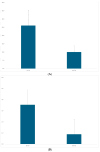Flow-Adjusted Trabeculectomy
- PMID: 39518748
- PMCID: PMC11546753
- DOI: 10.3390/jcm13216609
Flow-Adjusted Trabeculectomy
Abstract
Background/Objectives: As one of the most efficacious glaucoma surgical techniques, trabeculectomy is considered by many surgeons to be the "gold standard" intra-ocular pressure (IOP)-reducing intervention. The purpose of this study is to present our intra-operative flow-adjusted surgical method, which aims to provide safety and efficacy more simply than previous methods. Methods: Retrospectively, we evaluated outcomes for trabeculectomy or phacotrabeculectomy in surgery-naïve eyes over three years for patients with glaucoma not associated with other ocular co-morbidities. We defined complete success as an IOP between 5 and 18 mmHg plus at least a 20% reduction from baseline, without concomitant medications. Relative success was the same result, with glaucoma medication(s). Failure was regarded as an IOP less than 5 or higher than 18 mmHg, or by the need for a subsequent glaucoma operation. Results: We assessed the results from 186 eyes of 186 patients. After exclusion, a group of 45 trabeculectomies and 35 phacotrabeculectomies were analyzed. In eyes undergoing a trabeculectomy, over a mean follow-up of 16.0 months, IOP fell from 28.1 ± 8.0 mmHg with 3.6 ± 1.1 medications to 9.7 ± 3.6 mmHg (66% reduction) with 0.4 ± 1.0 medications (each p < 0.00001). The success rate was 88.9% (75.6% complete success). In eyes undergoing a phacotrabeculectomy, over a mean of 19.1 months, IOP fell from 26.1 ± 10.2 mmHg with 3.5 ± 1.3 medications to 10.0 ± 3.6 mmHg (62% reduction) on 0.9 ± 1.4 medications (each p < 0.00001). The success rate was 91.4% (57.1% complete success). Complication rates were low, with no major complications in either group. Conclusion: To lower IOP, our intra-operative flow-adjusted trabeculectomy and phacotrabeculectomy techniques appear to be safe and effective.
Keywords: intra-operative flow adjustment; trabeculectomy.
Conflict of interest statement
The authors declare that they have no conflicts of interest related to this clinical study.
Figures


References
LinkOut - more resources
Full Text Sources
Research Materials

